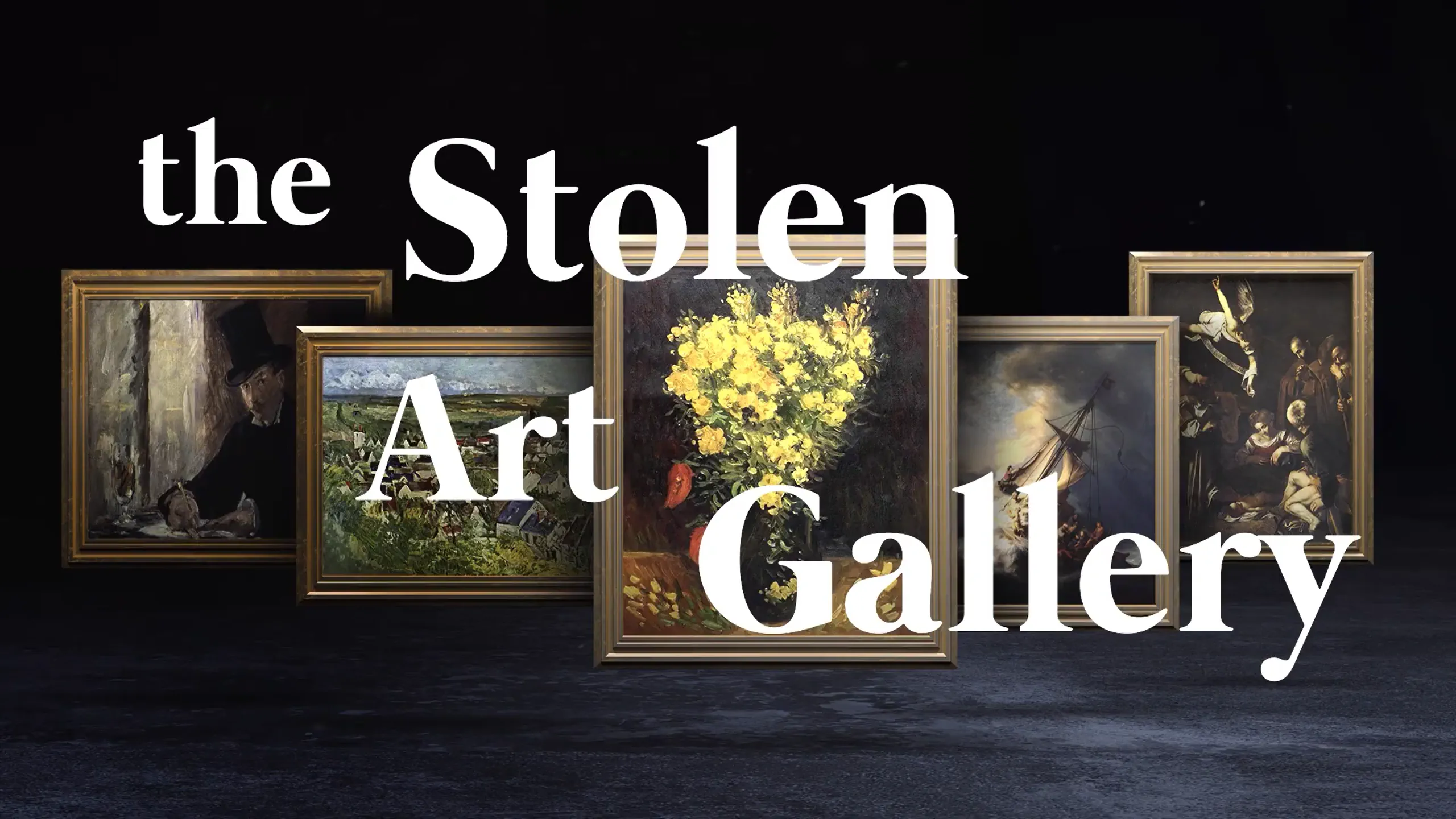
Five masterpieces that disappeared decades ago are now visible on the Oculus Quest 2.
From the product description
Whether by Nazis or common garden-variety art thieves, stolen art has always been a problem. The Mona Lisa itself rose to prominence when it was stolen in 1911 then recovered two years later. Prior to that it was just another one of da Vinci’s many works.
Not all artwork is ever recovered of course. The famous Isabella Stewart Gardner Museum heist in 1990 saw 13 priceless works of art stolen in a daring operation where criminals dressed up as police officers and were let in by the unsuspecting night security guards. None of the works have been recovered and the FBI has no conclusive leads. The right information could be worth $10 million so if you know anything you may want to cash in!
About the Experience
The Stolen Art Gallery is a bit different from many of the VR experiences we review here. Even though you get it from the Oculus Store, you can’t actually search for it. It’s unlisted and only available by invitation. The good news is that you can request an invitation and probably have it installed within a day or so. Head to their sign-up site to get started.
Once you get it, you can enter the gallery. Before you can walk around though, you choose and customize an avatar. I’m not really sure why they did it this way since Oculus/Meta already lets you define avatars, but maybe they didn’t want to be tied to that. The reason why you setup the avatar is because this is actually a social experience, or at least hypothetically. I suspect they may run this in some public (real-world) location where people can join together. At any rate, I haven’t seen other people join any time that I’ve been in it. It’s not a very large space, so I’m not sure how well it would work anyway.
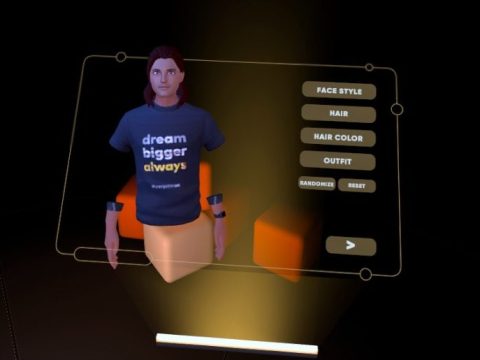

Choose your room (or the “private” option) then you are placed in the middle of the five framed works. Each one will display details to the side when activated. You can get as close to them as you’d like and even go behind them if you want, though they seem to use the same frame back so don’t expect scribbles from the artists.
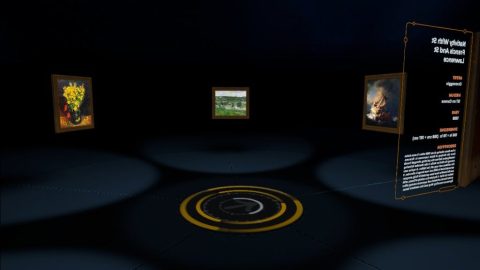
Graphics and Sound
This is a very minimalistic experience, but the graphics are sufficient. In a gallery app, the most important thing is that you can get up-close with the paintings. I wasn’t sure what the quality would be since some of them disappeared before the age of digital preservation. Presumably these were taken with very high-quality film cameras at the time so modern scans would still look good. With modern techniques, they capture enough angles to rebuild the actual topography of the canvas, but a good flat scan can still be nice. Thankfully, the scans here look good even from closeup, but they are clearly digital images with artifacts of the compression.
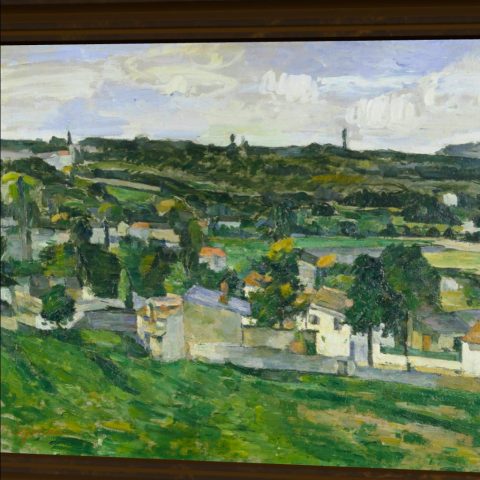
The main room is just a futuristic black void with the frames floating in the air. It’s what they were going for, but not my first choice. I prefer seeing more classical museum settings, but this certainly doesn’t distract from the works.
Information Content
Thankfully, there’s more than just the paintings. Without context, it wouldn’t be very impactful. For each item, you can see the title, the medium, the year it was painted, the physical dimensions, and some descriptive notes about the theft. You also hear some ambient sounds relevant to each painting, such as waves crashing for The Storm on the Sea of Galilee by Rembrandt.
During the experience, you wear a wristwatch. This can be used to summon the original artist to talk about the work. This is done in the style of a futuristic hologram floating about the watch. It’s a neat touch. I also like that it continues playing even if you walk away. This is nice since you may want to step back to get a different look and it’s frustrating when the audio stops (although the ambient audio fades away after a few feet).
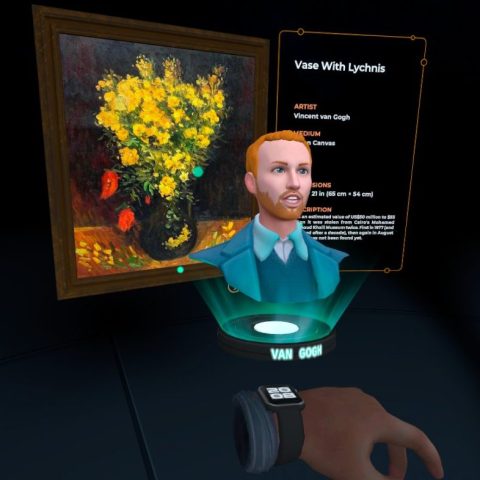
Navigation and Interactivity
Unfortunately, this is a smooth movement app only. If you only like teleport, you may want to close your eyes every time you propel yourself forward. It’s definitely not nice, although there’s only limited movement in a title with five paintings.
From your wristwatch, you can access five different interactive features. In addition to the talking head, you can also trigger a magnifying glass, a pen, emoji, and a camera. The magnifying glass lets you look at anything at different levels of magnification. It’s a nice idea, although the graphics quality isn’t really high enough for it to be necessary.
The camera is a selfie stick. This is kind of fun since it captures your avatar and whatever painting is behind you. If you were playing in a public session with multiple people, I suppose you could capture a group photo this way! Again, it would have been nice to use the Meta avatars since they are much more customizable and more reflect a user’s image.
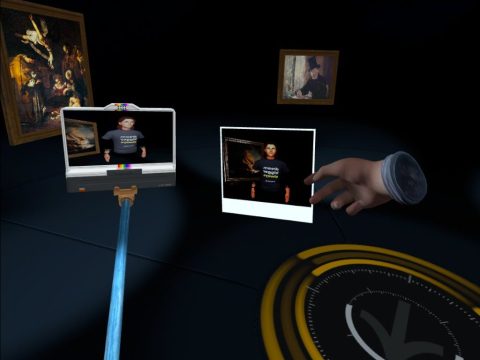
The pen is a very odd feature. Typically, we want to discourage drawing in a museum! Thankfully, the pen doesn’t actually write on anything except air. You can change color, undo, and reset the doodle. Again, I’m not clear why this feature is here.
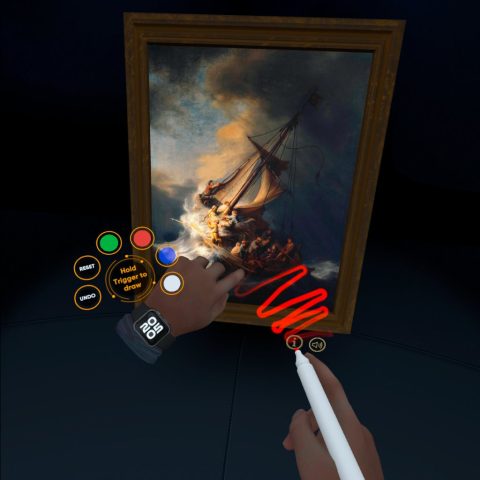
Finally, you can “emit” one of four emoji: Mad, laughing, love, and winky. Not even a simple, pleasant smile! I guess if there were other people present in the room, they might see your emojis as they float away from you, but I’m not sure. Like the pen, I’m not clear why it’s part of it.
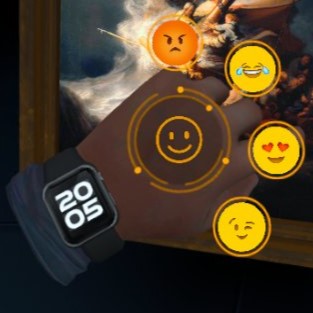
Updates and Support
This is a pretty recent app, but so far it doesn’t seem to have been updated and I’m not clear if there are plans to expand it. It would be nice to see more though, considering the Wikipedia entry lists over 20 famous stolen art works.
Summary
Overall, I really love this idea. Several movies have used the trope of stolen Nazi art for lavish warehouse scenes. It’s nice to see an effort to highlight stolen art in a more accessible way. I’d love to see the developers branch out more and continue to add works, but it’s a good start. Until they fully release it, you’re stuck filling out a form first, so assuming you trust them with your email address, you can request a copy at their site.
What do you think of this museum experience? Let us know in the comments!
Pros
- Great concept
- Quality is pretty good
- Accompanying details add good context
Cons
- Pen and emojis are odd features
- Would be better to use Meta avatars
- Small selection

